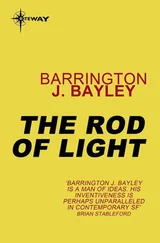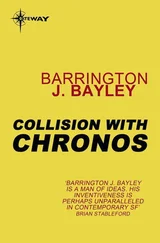What if gravitation were a force of repulsion? Since every piece of matter is surrounded by all the other matter in the whole universe, it is only necessary to suppose it is also opaque to the passage of the repulsive force for this force to be converted to one of apparent attraction between (relatively) close bodies. Earth and the moon are bound together because the pressure of the whole universe overcomes their native effort to separate. In one leap we have related gravitation to the recession of the galaxies.
The recessive hypothesis goes a step further. The equality of gravitational and inertial masses suggests that gravitation is not a force acting “through” the immaterial “something” we call space (as in the old ether theory) but is instead intimately implicated in the structure of space (as in general relativity). It is, therefore, a model of space that is called into play, one that answers to points 1 and 2 above.
The hypothesis posits primary locations which henceforth shall be called particles. The particles do not exist in isolation: they have a relationship with one another, and the relation is a dynamic one: they are all receding from one another at a standard uniform rate.
This recession is the major constituent of spacetime. It introduces, however, the rather abstruse concept of motion as an irreducible principle rather than a composite phenomenon played out against an already created backdrop of time and distance. Motion begins as the fundamental interaction, or mode of reciprocal existence, of the particles themselves. Time and distance are its emergent phenomena.
The idea can perhaps be conveyed with the remark that in receding from one another, the particles are not going towards anywhere else. This remains true of the receding galaxies.
Space, then, consists primarily of universal recession. In a sense the hypothesis revives the old principle of instantaneous action-at-a-distance, but this is because it pictures space as a dynamic connector of bodies, not as a static geometry.
In The Zen Gun there is talk of the Simplex, a state of existence in which recession is the only relation between particles. Our realm, however, could only accommodate a 4-simplex, or tetrahedron. In other words, it introduces geometrical relations as well as the recessive one. This means that a particle can interrupt the recessive link between other particles. When that happens, we shall assume the link is broken, and because of the law of perspective a pair of particles will each hide more of the celestial sphere from the other the closer together they are. What happens when a particle is receding from a greater number of particles in one direction than in another? Relativity has entered. We shall suppose the inequality to manifest itself in a lower overall rate of recession from the occluded region. Hence, the closer together bodies are in space, the slower is their rate of recession from one another.
If the distance between them is small enough, the recession is decremented sufficiently for them seemingly to attract one another. This is a definite transition. Their own mutual recession has become negative; for the first time particles are heading towards somewhere as they recede.
So apparently attractive forces are explained as an interference with a general arena of expansion. At the same time the degree in which a body’s velocity is decremented (the acceleration it apparently acquires, if gravitating) is independent of its inertial mass. It is the velocities that have priority; inertial mass is stamped upon a particle by virtue of its recession from the surrounding universe. (This explanation is roughly similar to Mach’s principle.)
As a by-product of decremented recession, we have to consider the recession lines connecting particles whose mutual recession has been slowed. These lines are still attempting to express their legitimate rate of expansion. There is something analogous to pressure upon them. A new class of effects is indicated, and to this we may assign electromagnetism.
An intriguing feature of magnetism is its similarity, in relation to electric force, with gyroscopic precession. In order to give an account of magnetism analogous to gyroscopic action, I concocted the notion of pseudospin described in Chapter 10. With a simple set of selection rules it becomes possible to give such an account, though the recession lines are treated as quasi-material. Also, the diagrams for electric attraction and repulsion become indistinguishable from already familiar lines of force.
The “particles” spoken of so far are conceived of as a simpler form of neutron. The retarding of recession converts a part of its mass to positive charge so that it becomes a proton. This is followed by the creation of countervailing negative charge to make a neutron. The negative charge is then ejected to become an electron. Hydrogen is born.
The recessive hypothesis is so full of holes that it can be (and has been) dismissed as “blind invention”. My strategy has been to get as much change out of it as possible, skirting difficulties and leaving them as unconquered fortresses in the rear, anyone of them cogent enough to blow the conjecture’s backside off. Just the same, it bears upon a sufficient number of additional questions, many of them previously unconnected, to make me think there might be a grain of truth in it. To mention a few:
1. Space is a continuum only along lines of recession. Across the grain, so to speak, it has discontinuous properties. Interesting from the point of view of the wave/particle dichotomy, and also because radiant energy consists of transverse waves.
2. A difficulty in the way of unifying the forces of nature has been that it is hard to imagine how one continuum could transmit them all. The recessive hypothesis offers a hierarchy of interpenetrating “spaces” constructed of different sets of recession lines: (1) a space consisting of a single absolute velocity—the velocity of light—emanating from the matter at the limit of the Hubble sphere; (2) a dynamic space of relative velocities and gravitation; (3) a subordinate space conveying electric force.
3. The hypothesis gives a physical basis to the idea of the inertial system. For argument’s sake we can take an object’s inertial framework to consist of the distant sphere of particles receding from it at the velocity of light. If it is accelerated to a new velocity then associated with that velocity will be a similar framework composed of a different set of particles Gust as a galaxy anywhere finds itself at the centre of a symmetrically expanding system; the object, however, will be displaced from the centre of its system)—so it continues in its state of motion. Without recession, dynamics might be what Aristotle thought it was: applying a force produces not acceleration but a uniform motion, which stops when the force stops.
4. It is possible to save the perfect cosmological principle, which requires that the distribution of the galaxies should be roughly the same at any epoch. The primary recession is an interaction antecedent to time or spatial distance. It is therefore conceivable that the equation between time and distance is not applicable at very long range. The farther galaxies could be receding from us without getting any farther away.
5. It is an appealing idea that recession leads both to gravitation and to the universal property of dispersal we know as the second law of thermodynamics. It would mean that water falling through a water turbine is answering to the same principle as steam expanding through a steam turbine.
6. Attributing the two forms of electric force to the two directions of pseudo spin explains the breakdown of parity in some experiments. The mirror image of a negative charge is a positive charge. Parity is conserved if the signs are switched.
Читать дальше












